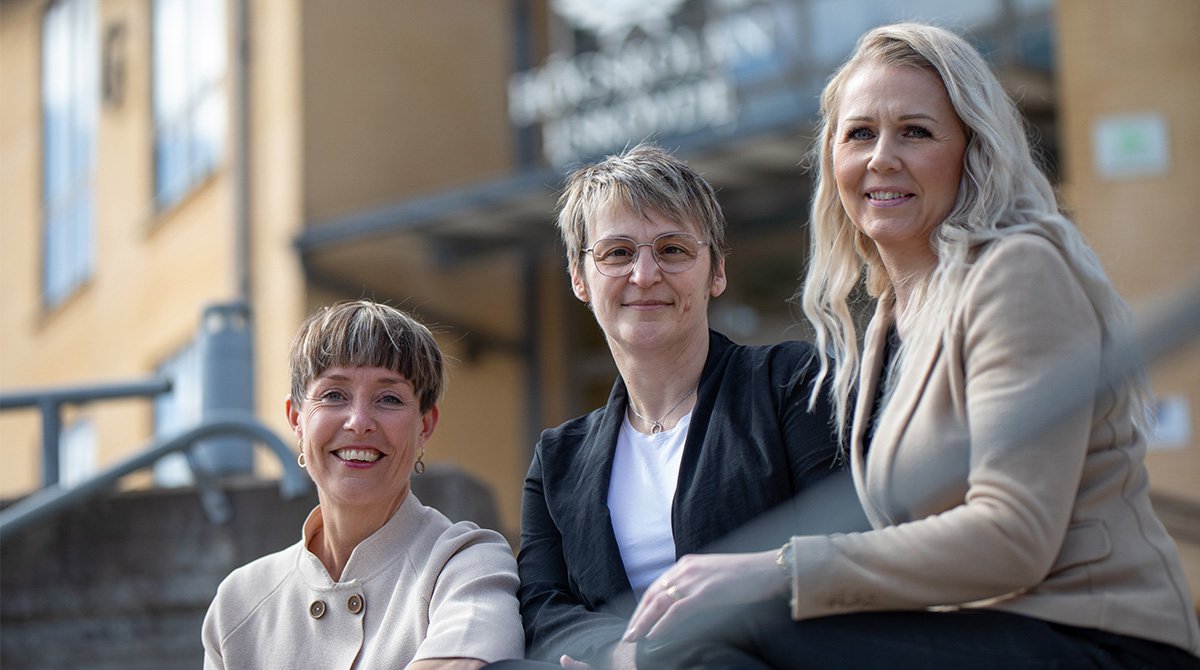New promising biomarkers for sepsis

Antibiotic resistance and invasive group A streptococci are causing sepsis cases to rise globally. As bacteria become resistant to antibiotics, finding effective drugs to combat infections causing sepsis becomes more difficult. This can lead to more severe cases of sepsis and increased mortality. Researchers at the University of Skövde have now identified new combinations of biomarkers that may provide earlier diagnosis of this life-threatening condition.
Anna-Karin Pernestig, Sanja Jurcevic, and Diana Tilevik are all researchers at the Department of Bioscience at the University of Skövde. Since 2011, they have been conducting research together with Tove Helldin, a researcher at the Department of Information Technology, to enable earlier diagnosis of sepsis—a life-threatening condition that occurs in the body as a response to an infection. Over 50,000 people are affected by sepsis each year in Sweden, with approximately 20 percent of them dying.
"We have identified new combinations of biomarkers that show very promising diagnostic performance. The next step is to validate the biomarkers through further analysis, but this requires access to new biobank samples and additional research funding," says Diana Tilevik.
At the moment, the researchers are primarily focused on analyzing and compiling generated data. They also plan to seek more research funding to continue sepsis research and perform validation of the biomarkers, as well as further development of the digital decision support tool SepsIT®.
Skövde a strong node for sepsis diagnostics
In collaboration with stakeholders across Sweden and Europe, the four researchers have generated new knowledge and data from various areas related to sepsis diagnostics, such as the life science industry, patient perspective, healthcare, and clinical laboratory. They have also integrated insights from medical technology and standardization to gain a comprehensive understanding of the diagnostic challenges and opportunities in the field of sepsis.
"At present, we are analyzing and compiling the large amount of data we have generated. It contains potential new biological markers for sepsis. The data will support the continued development of our digital clinical decision support system for sepsis, SepsIT®, where we already have a developed prototype," says Anna-Karin Pernestig.
In 2023, the researchers used the Innovation Platform to distribute a survey within the Västra Götaland region to evaluate the layout and visualization of SepsIT®. The results of the survey are now being processed by Tove Helldin with the aim of improving the design of the clinical decision support tool in SepsIT®. The researchers have also conducted sequencing of more than 1,000 bacterial isolates collected from sepsis patients to study microbial biodiversity. These data are also being analyzed currently.
Why is sepsis so much in the media right now?
"The Sepsis Fund has received a lot of attention lately in connection with the invasive group A streptococcal infections that led to sepsis becoming visible in the mass media. There is increased interest in raising awareness about sepsis among the general public. This includes sharing patient stories and experiences from survivors or their family members to highlight the seriousness of the disease and the need for early and rapid treatment," says Sanja Jurcevic.
